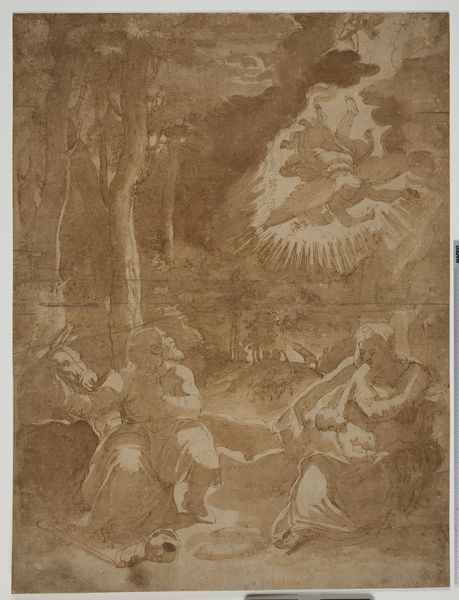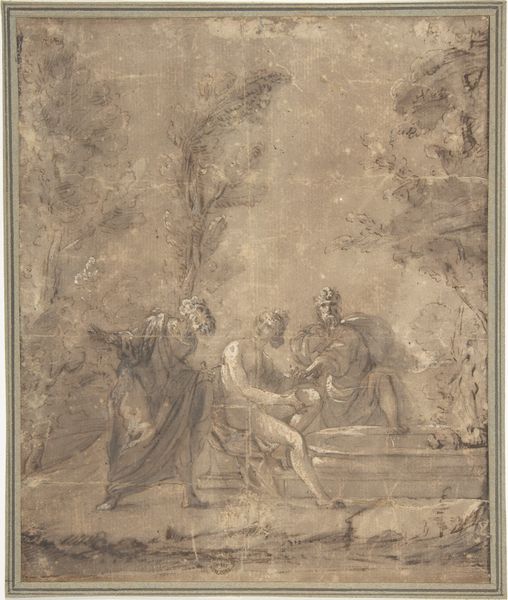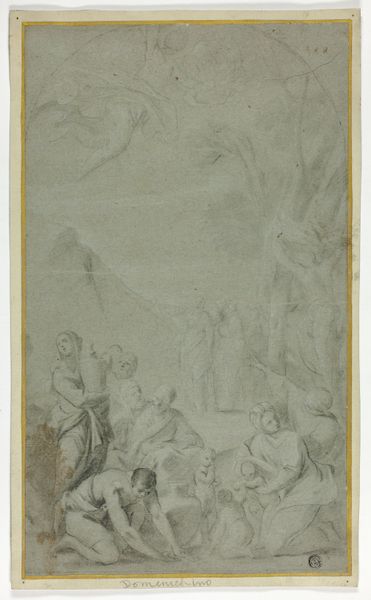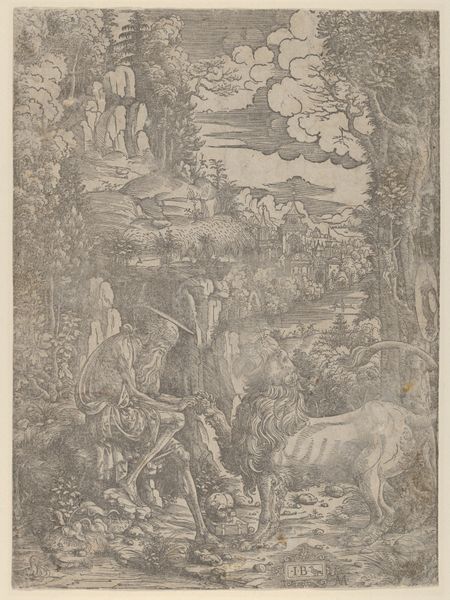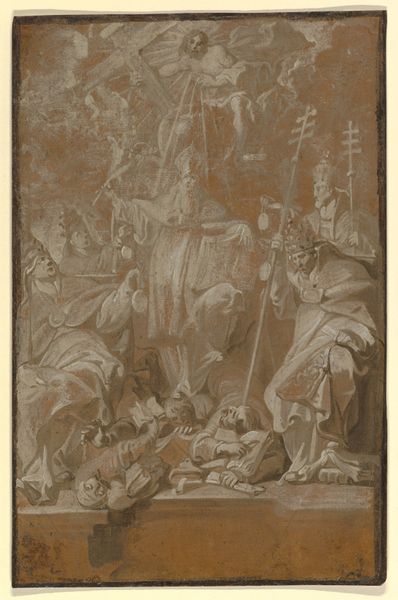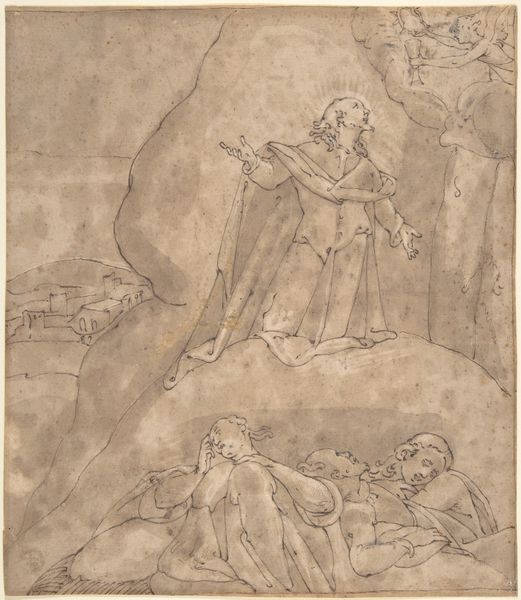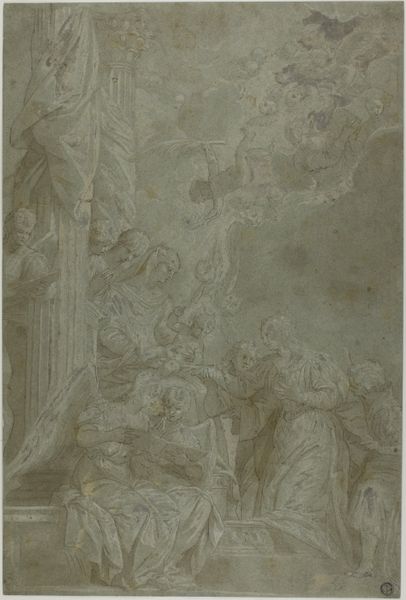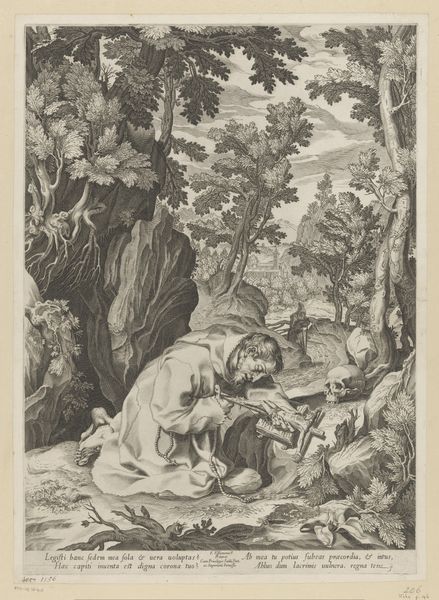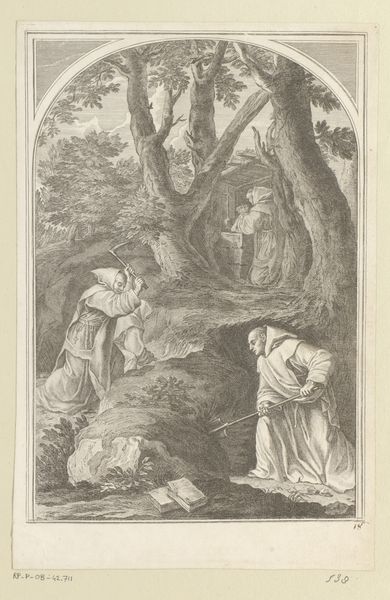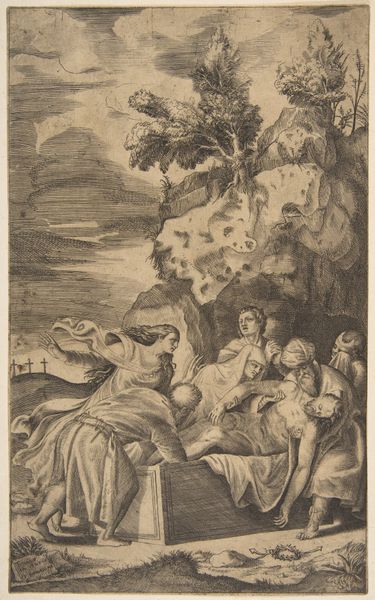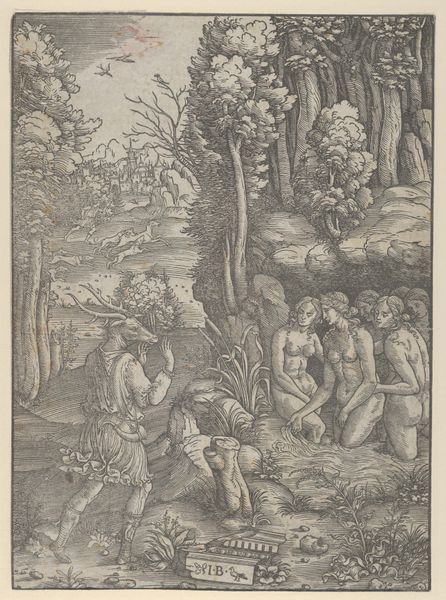
drawing, print, pencil, charcoal
#
drawing
# print
#
pencil sketch
#
landscape
#
charcoal drawing
#
figuration
#
pencil
#
charcoal
#
history-painting
#
italian-renaissance
Dimensions: 11-5/16 x 9-1/2 in. (28.7 x 24.1 cm)
Copyright: Public Domain
Curator: This evocative work is Jacopo Bassano's "The Annunciation to the Shepherds." It's dated sometime between 1510 and 1592 and is rendered in pencil and charcoal, giving it a beautifully textured, almost dreamlike quality. Editor: Dreamlike is right! It's incredibly moody. The monochrome palette and soft lines give it an ethereal feel, almost as if we’re viewing a memory. I'm struck by how grounded it is despite the subject matter. Curator: Indeed. Bassano was known for bringing religious scenes down to earth. Note how he's situated the divine announcement within a very tangible landscape. This reflects the rising prominence of landscape painting at the time and highlights how daily life permeates even the most sacred stories. It almost renders sacred history as landscape. Editor: It does, and that grounds it in accessibility. The shepherds don't seem awestruck, more like surprised workers, interrupted during a mundane evening. I’m drawn to that aspect, that ordinariness coupled with something so… extraordinary. I'm thinking about the ways access to God through a relatable and real way challenges power dynamics and elevates those often excluded or looked down upon by powerful, dominant institutions. Curator: And that emphasis would certainly resonate given the sociopolitical undercurrents brewing throughout Europe during Bassano’s career. These works served both the patrons and the artist himself. In their presentation, the subjects also reveal the rising significance of a public who sought direct, personal engagement with religious art. Editor: You can also read these images in relation to more recent narratives and art history making. Consider the political implication, of, say, someone like Alice Neel elevating her own lived, perhaps ordinary, reality onto the same artistic level that only royalty would experience previously in the tradition of European portraiture, that also breaks a type of art establishment as we know it, too. It changes the dialogue about whose narrative and who gets to be seen or be represented in this thing called "art". Curator: These visual strategies—every element, medium, and stroke—contribute significantly to the reception, interpretation, and institutional placement of such pieces within culture at large. Editor: Exactly. Thank you for showing me the importance of context when observing, understanding, and receiving something such as art! Curator: And thank you, this made me consider how art can represent narratives across all sorts of eras.
Comments
No comments
Be the first to comment and join the conversation on the ultimate creative platform.
